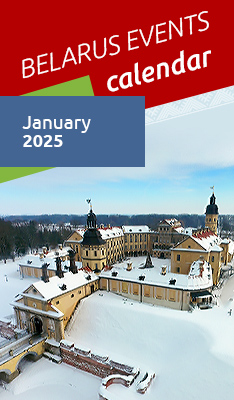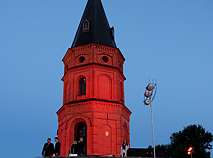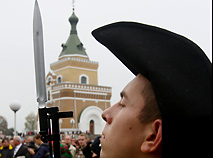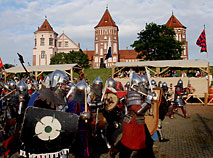Military History Tourism in Belarus

Located in the very heart of Europe, Belarus has seen the greatest wars in the global history. Today visitors can see places of famous battles and great tragedies of the past, can honor the memory of the fallen of many nations, and can participate in historical festivals and historical recreation projects.
For those, who take a close interest in military history, Belarus is one of the most important countries of the world. Many times the country was an arena of armed warfare and the place where armies led by leaders of European and Asian states clashed.
In Belarus there are still castles and temples that held the line in the face of enemies during the Middle Ages. Our lands saw battles against the Swedes during the Great Northern War. In 1812 Napoleon’s army suffered a crushing defeat on the banks of the Belarusian river Berezina.
In the early 20th century Belarus was the place of fierce fighting during World War One. Mogilev even hosted the headquarters of the commander in chief of the Russian army – Russia’s last emperor Nicholas II.
There is no doubt that the most tragic pages of Belarus’ history were written during the Great Patriotic War that took lives of every third Belarusian.
Memory of the war lives on in the legendary Brest Hero Fortress, the Buinichi Field Memorial in Mogilev, in Orsha’s outskirts that heard the first volleys of the famous MLRS Katyusha, in Stalin’s Line and many other places that bear witness of the dreadful events…
The history of the war can be learned from the internationally recognized Khatyn Memorial and hundreds of other Belarusian villages that the Nazi burnt down together with the villagers, the blood-filled death camps Trostenets, Krasnyi Bereg, and Ozarichi, multiple ghettos that were set up all over the country…
Visitors are encouraged to take a tour of the world’s first museum of the history of the Great Patriotic War. It was established in Minsk back in 1942 and moved into new premises on the occasion of the 70th anniversary of Belarus’ liberation.
In tribute to the memory of the heroes the Belarusians have built many obelisks and memorials, put tanks and guns used in the Great Patriotic War on stone pedestals, created unique museum exhibitions, and take care of the mass and individual graves of soldiers and civilians.
Every year festive events, meetings with war veterans and memorial evenings are held on the Victory Day on 9 May and on the memorable days of the liberation of Belarusian towns and villages during the Bagration offensive, one of the largest operations in the history of mankind.
On Belarus Independence Day on 3 July, when the Belarusian capital city was liberated from the Nazi invaders, Minsk conducts a grand military parade and a festive procession.
Pobeditelei Avenue hosts a show of the equipment and armament used during the Great Patriotic War, a march of soldiers wearing the Red Army uniforms, “partisans” and "civilians" wearing the period clothes of the 1940s, and, of course, a parade features modern weapons of the Belarusian army.
Belarus has developed interesting historical routes dedicated to the major wars and famous battles, the heroic feats and the tragedies which we cannot forget...








 print version
print version make home page
make home page add to bookmarks
add to bookmarks









